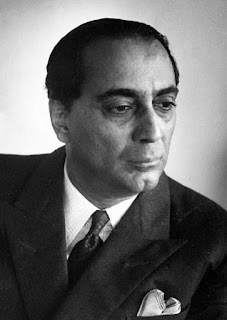Homi Bhabha

Remembering one of India's greatest scientists, Homi Bhabha, on his birth anniversary: Homi Jehangir Bhabha (30 October 1909 – 24 January 1966) was an Indian nuclear physicist, and the founding director and professor of physics at the Tata Institute of Fundamental Research (TIFR). Colloquially known as "father of the Indian nuclear programme", Bhabha was also the founding director of the Atomic Energy Establishment, Trombay (AEET) which is now named the Bhabha Atomic Research Centre in his honour. Awards: Bhabha was awarded the Adams Prize (1942) and Padma Bhushan (1954). He was nominated five times consecutively for the Nobel Prize in Physics between 1951 and 1956, by French Mathematician Jacques Hadamard. However, the Prize eluded him. Early life: Homi Jehangir Bhabha was born into a prominent wealthy Parsi family, through which he was related to businessmen Dinshaw Maneckji Petit, and Dorabji Tata. He received his early studies at Bombay's Cathedral and John Con...



